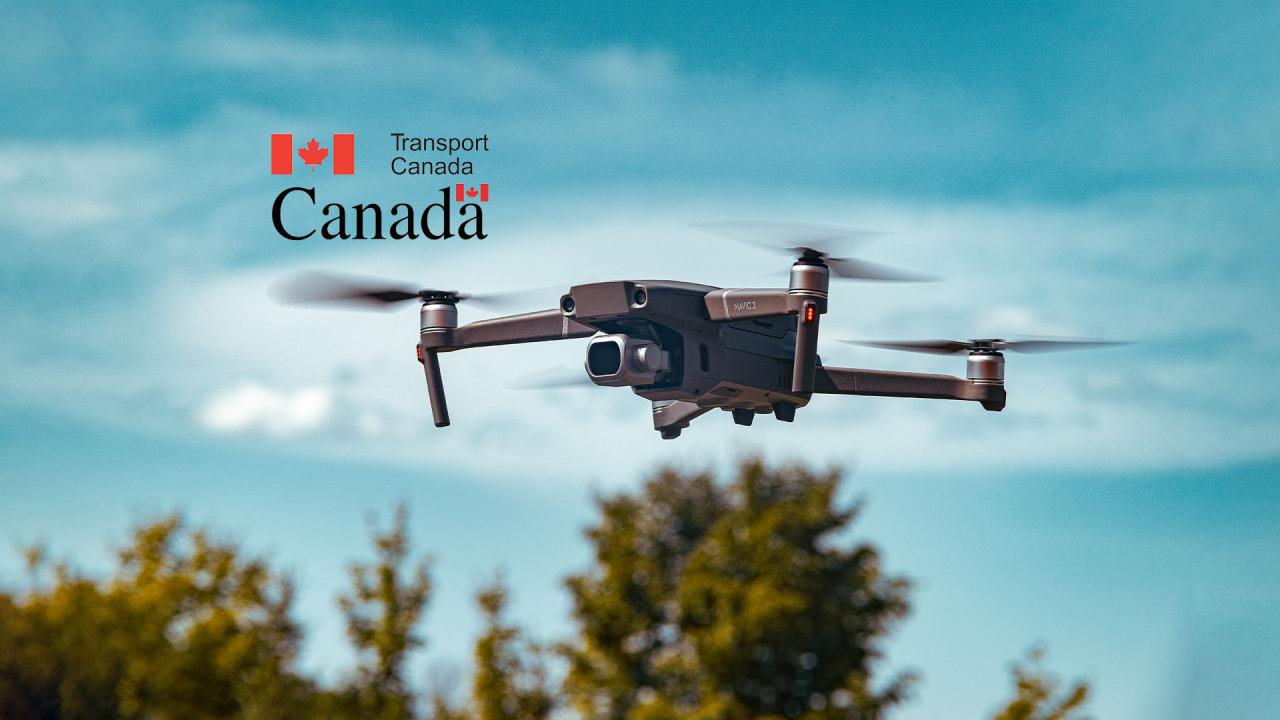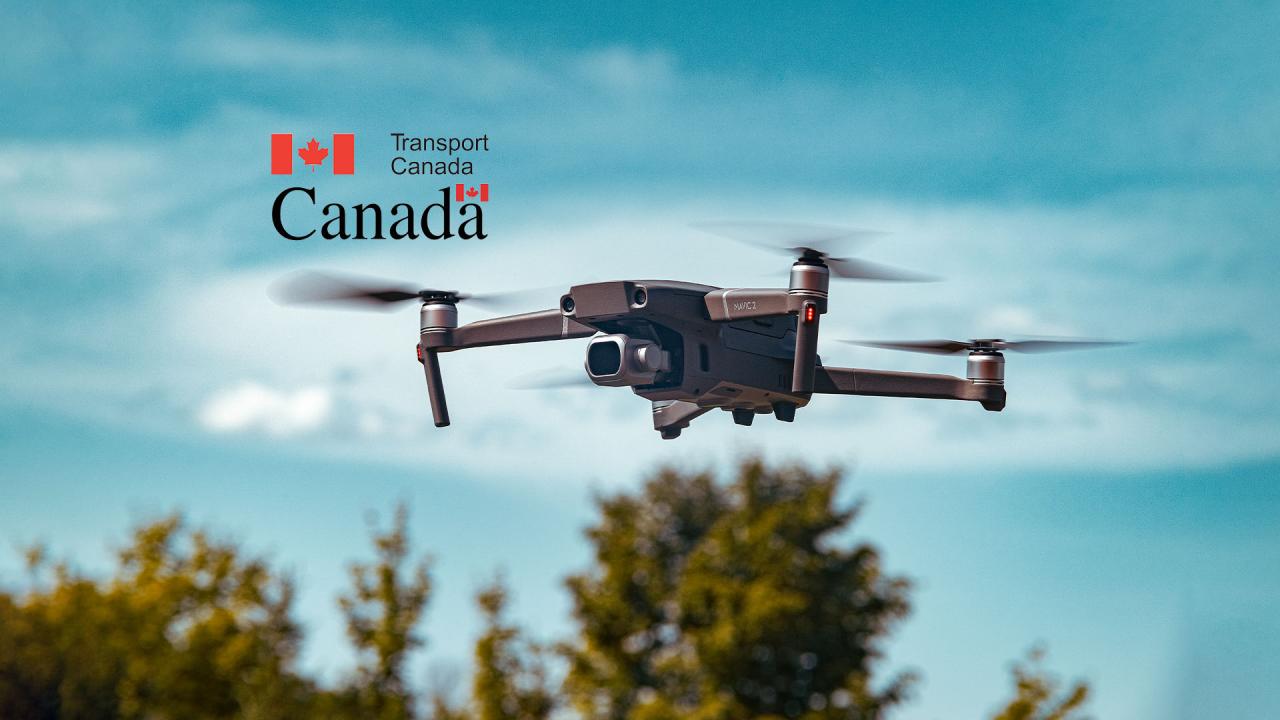Transport Canada drone licenses are essential for operating drones legally in Canada. This guide delves into the various license classes, outlining the specific requirements, operational limitations, and application processes involved. We’ll explore the crucial aspects of drone regulations, safety guidelines, and necessary training, ensuring you understand the legal and practical implications of drone operation. Understanding these elements is paramount for responsible and compliant drone usage.
From navigating the complexities of the application process to understanding the nuances of airspace regulations and insurance requirements, this comprehensive resource aims to provide clarity and empower you to fly safely and legally. We will also address the differences between various certifications and explore the importance of ongoing compliance.
Transport Canada Drone Licenses: A Comprehensive Guide

Navigating the world of drone operation in Canada requires understanding Transport Canada’s licensing framework. This guide provides a detailed overview of the various license classes, application processes, regulations, safety guidelines, and other essential information for aspiring and current drone pilots.
Types of Transport Canada Drone Licenses
Transport Canada offers different drone license classes based on the drone’s weight and intended operational complexity. Understanding these distinctions is crucial for legal and safe operation.
| License Class | Weight Limits (kg) | Operational Restrictions | Required Training |
|---|---|---|---|
| Basic Operational Knowledge (BOK) | Under 25kg | Visual Line of Sight (VLOS) only, limited operational areas, no commercial operations. | Online self-study course. |
| Remote Pilot Certificate (RPC) | Under 25kg | VLOS and beyond visual line of sight (BVLOS) with specific approvals, broader operational areas, allows commercial operations (with further restrictions depending on operation). | Advanced theoretical knowledge and practical flight training. |
| Advanced Operations Certificate (AOC) | 25kg and above | Complex operations, BVLOS, night operations, potentially heavier drones, stringent safety requirements and approvals. | Extensive training, operational procedures, and risk assessments. |
Application Process for a Transport Canada Drone License

Obtaining a Transport Canada drone license involves a straightforward yet detailed application process. Adherence to these steps ensures a smooth and timely approval.
- Create a Transport Canada account and complete the online application form.
- Provide all required documentation, including proof of identity and training completion (if applicable).
- Pay the applicable fees.
- Await processing of the application (timelines vary).
- Upon approval, receive your official drone license.
Potential delays can arise from incomplete applications or missing documentation. Ensure all information is accurate and complete before submission.
Obtaining a Transport Canada drone license is crucial for legal operation. Understanding the regulations is paramount, especially considering advancements in the drone industry; for example, companies like archer aviation are pushing technological boundaries. Therefore, familiarizing yourself with Transport Canada’s licensing requirements is essential before operating any drone, regardless of its sophistication or intended use.
Drone Regulations and Safety Guidelines
Adhering to Canadian drone regulations is paramount for safe and legal operation. Understanding these rules and guidelines minimizes risks and potential penalties.
Key regulations include maintaining visual line of sight (VLOS), respecting airspace restrictions, and avoiding populated areas. Safety guidelines emphasize pre-flight checks, awareness of surroundings, and responsible operation. Penalties for violations range from warnings to substantial fines and potential legal action.
Required Training and Knowledge for Drone Pilots
Successful drone operation requires a comprehensive understanding of safety protocols and regulations. This knowledge is vital for preventing accidents and ensuring compliance.
- Airspace regulations and classifications
- Emergency procedures and protocols
- Drone maintenance and pre-flight checks
- Operational limitations and restrictions
- Weather conditions and their impact on flight
- Privacy laws and data protection
Drone Insurance and Liability, Transport canada drone license
Drone insurance provides crucial financial protection against potential accidents or damages. Selecting appropriate coverage is essential for mitigating risks.
| Insurance Provider | Coverage Options | Pricing (Example) |
|---|---|---|
| Provider A | Liability, hull coverage, third-party damage | $XXX per year |
| Provider B | Liability only | $YYY per year |
The table above provides example pricing. Actual costs vary based on coverage levels and drone valuation.
Renewing a Transport Canada Drone License
Maintaining a valid drone license requires timely renewal. The renewal process involves updating personal information and paying the renewal fee.
Failure to renew a license on time can result in operational restrictions or license suspension. Renewals should be completed before the expiration date to avoid any interruption in operations.
Remote Pilot Certificate vs. Basic Operational Knowledge

| Feature | Remote Pilot Certificate (RPC) | Basic Operational Knowledge (BOK) |
|---|---|---|
| Weight Limits | Under 25kg | Under 25kg |
| Operational Privileges | Wider range, including commercial operations (with limitations) | Limited to recreational and non-commercial flights under VLOS |
| Training Requirements | More extensive, including practical flight training | Online self-study course |
Visual Representation of Airspace Classes
Canadian airspace is categorized into classes (A, B, C, D, E, G), each with specific operational restrictions based on altitude and geographical location. Understanding these classifications is essential for safe and legal flight planning.
Class G airspace is generally uncontrolled airspace below a certain altitude, typically used for recreational drone operations. Classes A through E represent increasingly controlled airspace, with stricter regulations and higher altitudes. Restrictions within each class involve altitude limitations, required communications, and potential flight authorizations.
A detailed description of each airspace class, including altitude ranges and associated restrictions, is available on the Transport Canada website. It is crucial to consult these resources before any drone flight to ensure compliance.
Successfully navigating the world of Transport Canada drone licenses requires a thorough understanding of regulations, safety protocols, and the specific requirements for your intended drone operations. This guide has provided a framework for understanding these complexities, emphasizing the importance of responsible and legal drone usage. By adhering to the guidelines and seeking appropriate training, you can confidently and safely utilize drones within the Canadian legal framework.
Remember, responsible drone operation contributes to a safer airspace for everyone.
Obtaining a Transport Canada drone license involves understanding various regulations and safety protocols. This is especially crucial given the increasing prevalence of sophisticated drones, such as the shahed drone , which highlights the need for responsible operation. Therefore, thorough knowledge of Transport Canada’s licensing requirements is paramount for safe and legal drone operation.
Helpful Answers
What happens if I fly my drone without a license?
Flying a drone without the appropriate license can result in significant fines and potential legal repercussions.
How long does it take to get a Transport Canada drone license?
Processing times vary, but generally, expect several weeks. Factors such as application completeness influence processing speed.
Can I use my drone for commercial purposes with a basic license?
No, commercial drone operations typically require a higher level of certification and adherence to more stringent regulations.
Where can I find approved drone training programs?
Transport Canada’s website lists approved training providers. Always verify the provider’s credentials before enrolling.
What type of insurance is recommended for drone operation?
Liability insurance is highly recommended to cover potential damages or injuries caused by your drone.
